Pre-Manufactured Value (PMV)
Pre-Manufactured Value (PMV), was first set out in The Farmer Review as a metric to measure the proportion of manufactured components.
Expressed as a percentage, PMV is intended to identify the extent to which offsite techniques are implemented, aiming to reduce on-site labour. A higher PMV percentage signifies a greater proportion of offsite activity on a project, programme or portfolio.
The 2018 Industrial Strategy Construction Sector Deal explicitly commits to “measurable improvements in productivity, and the level of pre-manufactured value in buildings and infrastructure”.
The public sector has therefore embraced PMV as a proxy measure to encourage greater adoption of offsite solutions, where it affords value. However, PMV should be implemented as part of a comprehensive, outcome-focused scorecard, rather than as an isolated Key Performance Indicator (KPI). Given its origins (i.e. from a comprehensive review of the UK’s construction labour model) PMV is a key factor in a broader strategy to achieve improved social, environmental, and economic outcomes.

The benefits of optimising PMV include:
- Enhanced productivity and predictability: Improving efficiency and reliability in project delivery, including time, cost, quality
- Quality and safety enhancements: Providing greater control leading to improved end-product quality
- Reduced on-site risks: Reduced on-site safety risk, with key activities moved to an off-site controlled environment.
- Environmental sustainability: Reduced material waste, often with improved environmental credentials and lower carbon impact
- Cost efficiency: Delivering cost savings through reduced on-site labour, faster construction, and the use of standardised processes, designs and products.
It’s important to strategically optimise PMV, considering the specific context of each project; a higher PMV isn’t always better, and an exclusive focus on PMV can lead to unintended consequences.
PMV measurement is increasingly adopted by the public sector. Homes England’s Affordable Homes Programme for example, includes a commitment from strategic partnerships to deliver a minimum of 25% of homes using MMC, with PMV scores of 55% plus as a key criteria.
At Akerlof we support organisations in calculating PMV, either directly or as an independent third party. We have evaluated PMV for over £4bn worth of projects, across sectors including housing, healthcare, custodial and data centres.
For a detailed understanding of PMV, we encourage direct contact with our team.
Pre-Manufactured Value (PMV %) is the financial proportion of a project’s Gross Construction Cost attributed to pre-manufacturing. The calculation is as follows:

Where:
- Pre-Manufactured Value (PMV £) is determined by analysing and summing the pre-manufactured value of each project package. It encompasses all costs incurred prior to final on-site installation, including materials, manufacturing labour, overhead and associated plant, logistics and transportation.
- Gross Construction Costs include both pre-manufactured and on site labour costs, preliminaries costs, overhead, profit and risk. There are inclusions and exclusions to this, defined within our technical guidance.
For anyone needing help calculating PMV, please get in contact with our team at PMV@akerlof.co.uk and we’d be happy to assist.




